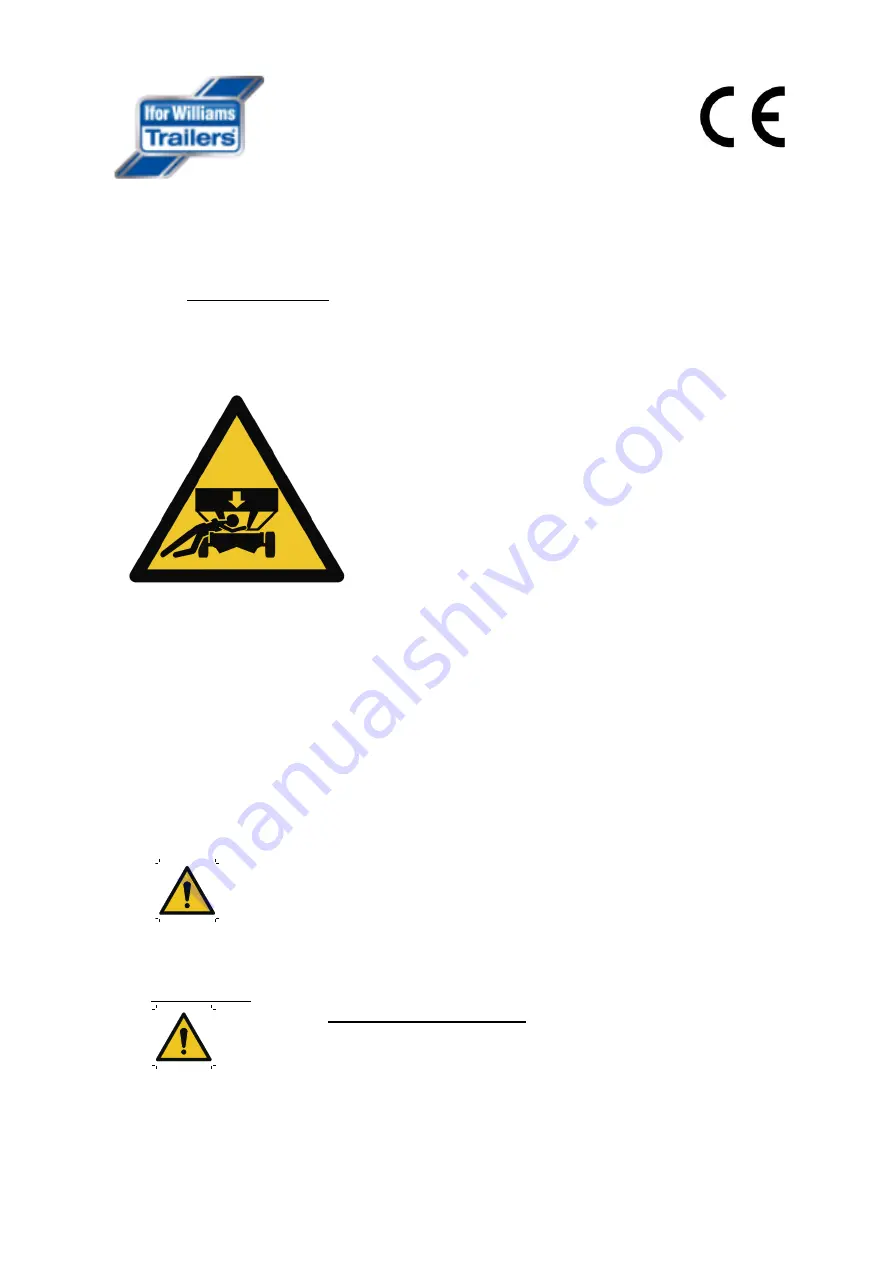
Page | 25
4
–
Operation
–
Tiltbed Trailers
Note that the Tiltbed trailers covered by this manual are suitable for any vehicle or other type of
rolling load with pneumatic tyres. They are not suitable for trailers with solid tyres
–
notably Access
Platforms and Rollers.
4.1
–
Safe Operation of Tiltbed Trailers
•
DO NOT LEAVE THE TRAILER UNATTENDED WITH THE
TRAILER BED RAISED
•
NEVER REACH UNDER A TILTED TRAILER WHEN LADEN
•
NEVER REACH UNDER AN UNLADEN TILTED TRAILER
UNLESS IT IS SAFELY SUPPORTED BY A WORKSHOP CRANE OR
SOME OTHER MEANS. DO NOT RELY ON THE HYDRAULICS TO
HOLD THE BED UP
•
It is recommended that Personal Protection Equipment such as safety boots and gloves be
worn when operating the trailer.
•
It is recommended that new users practice operating the tilting mechanism with the trailer
empty to ensure familiarity with the controls.
•
By cordoning off, or by some other means, prevent encroachment of people and, so far as
possible property, into the “working area”. This may be as defined as
6 m behind and 1 m
either side of a Tiltbed Trailer.
•
Ensure lighting is adequate.
•
The trailer lighting could be obscured when tilted. Ensure that measures are taken to
compensate for this when operating on a public road, such as placing a warning
tri-angle or lights behind the vehicle.
•
Try to avoid loading vehicles backwards. It is extremely difficult to correct directional and
positional errors when loading backwards.
•
Tiltbed Trailers must be stationary, coupled to the towing vehicle, with the towing vehicle
handbrake on but the trailer handbrake OFF. (The Ifor Williams Tiltbed system
results in the trailer being pulled forwards or pushed back slightly as the tilting
takes place. The trailer wheels must be free to rotate.)
•
No-one except the Operator should be in the working area while tilting, loading or unloading.
















































